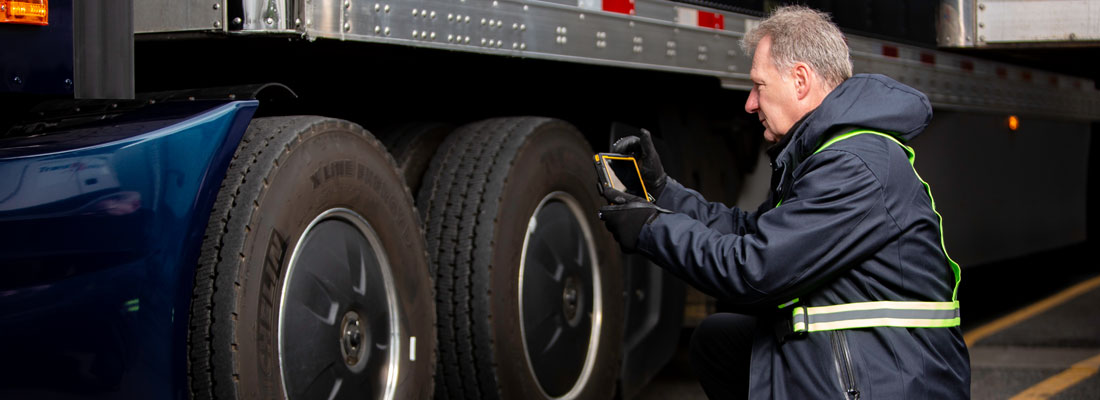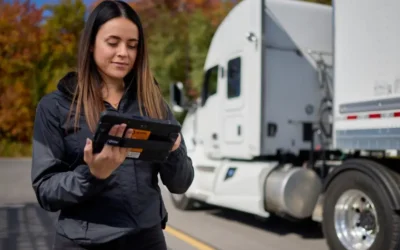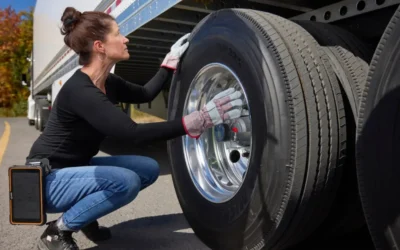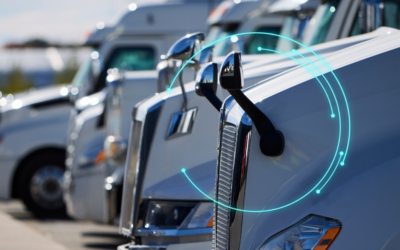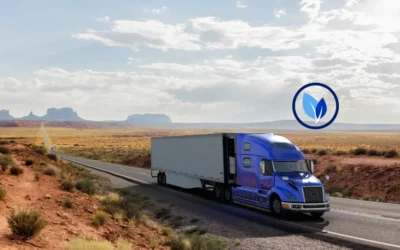Wheel-off incidents are a safety hazard out on the road. No breaking news here.
Run‑away wheels can cause serious accidents and even fatalities. This means an unsuspecting father, grandmother, or teenager, driving to work, a meeting, or a friend’s house one morning, might not return to their family at the end of the day. Theirs is the vehicle that stopped a bolting wheel on its random course. They were at the wrong place at the wrong time.
The picture just painted is unsettling, and the point of this article is to discuss how telematics, along with people, processes and technology, can help prevent wheel-offs. However, we sometimes focus solely on statistics and trends, the liabilities and fines imposed by law, and forget about the human beings whose lives are lost or forever changed. Taking every possible measure for keeping wheels safely secured is essential.
A quick glimpse
Media coverage and available data from the province of Ontario offer this overview of wheel separation incidents over the last three decades. Incidents peaked in the late 90s and the Ontario government passed an absolute-liability law in 1997, that holds carriers responsible even if due diligence can be demonstrated. Both carriers and drivers can be held liable with fines ranging from $2,000 to $50,000.

The number of incidents then decreased by 54% between 1997 and 1998, plummeting from 215 to 99 and further down to 65 in 2001. Good news. In 2013, however, numbers shot back up to 147 and remain well above the 100 mark, with 127 reported incidents in 2019. Although these rising numbers may be partly due to more trucks on the road and changes in reporting methods, working to lower these numbers still means saving lives.
Why do wheels come off?
The reasons for wheels coming off vary, but Ontario’s Ministry of Transportation data shows most cases are wheel hub and fastener related. Working from the premise that these components are adequately engineered, failure then points to installation and maintenance.
Overlooking the retorquing recommendations of vehicle and wheel equipment manufacturers after a wheel change also contributes to the danger of wheel separation. This operation must be taken seriously and properly managed.
Daily inspections may be part of the equation as well, more specifically in the winter months which statistically account for a higher number of wheel separation incidents. Cold temperatures cause fasteners to expand and contract which may cause problems; with snow and ice accumulation on the wheels that may cover the warning signs, drivers need to pay closer attention to notice a loosening bolt.
How do we keep wheels on?
Proper installation and maintenance by trained technicians are essential. Ontario developed a mandatory Commercial Vehicle Wheel Service training program in the mid-1990s which likely contributed to the sharp decrease of incidents in the years that followed.
When it comes to the manufacturer-recommended retorquing after 80 km to 160 km following a wheel change, it’s about having a fail-safe process in place to ensure it gets done. Planning and monitoring of this can be a challenge, with trucks setting out for long hauls, and trailers changing hands.
Planning for retorquing inside a trip is cost efficient and ensures the job gets done. Remembering that retorquing is required while on the road and having to call for roadside service is costly in both time and money. If there is no obvious sign of loosened bolts, it may be tempting to overlook a routine retorquing operation.
Thorough daily inspections are also part of the solution. Drivers must be meticulous in general, although paying close attention to the wheels cannot be stressed enough; lives are at stake. Wheel verification includes the wheel, hub, and fasteners. Lug nut indicators or torque stripes can be used to help spot loosening.
How can telematics help?
After proper installation and maintenance of wheels is ensured through training and certification of installers, what can be done to ensure the follow-up actions discussed in this article—retorquing and daily inspections— are carried out as they should? Setting clear procedures for everyone is a start, but the mind forgets and paper gets lost. Telematics can issue reminders and help strengthen processes.
INSIDE THE CAB
Telematics systems now include ELDs and even more advanced in-cab devices that assist drivers in their operations. These devices create an opportunity for automating reminders for drivers of the required activities they need to carry out for their own safety and the safety of the general public.
With tractor and trailer wheel changes recorded electronically instead of on paper, systems can track the distance travelled and issue retorquing reminders to the driver on his in-cab device when the wheel reaches the 80 km to 160 km mileage. This is also possible for wheels of trailers that may not be equipped with odometers; systems can calculate the trailer’s piggy-back distance based on the distance the tractor has travelled.
Daily inspections contribute to catching wheel defects, and so reminders in that area can also be helpful. Systems that include electronic DVIRs can track the time of the last inspection and issue a reminder when another one is due. Drivers can also be alerted of any outstanding minor or major defects on the current inspection for both the tractor and trailer. For minor defects, drivers can be warned when the 48-hour repair delay is approaching.
AT THE OFFICE
For safety managers, telematics affords them a complete view of these critically important safety-related activities across the fleet. They can see which activities drivers have performed and receive notifications for those that remain pending and create a safety risk. In addition to better managing safety, they are also able to demonstrate to insurers that risk is tightly controlled within their organization.
Trimac’s project manager, Matt Grant, helped define and implement such features within his organization. “With both wheel changes and daily inspections captured electronically, we are now well on our way to replacing our paper-based processes.” He says. “Our operations can now get a holistic and immediate view of these activities. This is a significant improvement in helping Trimac track key safety activities across our fleet.”
Doing all we can
Wheel separation accidents can be reduced; lives can be saved. Whether by raising awareness, improving processes, or maximizing our use of technology, if we can do something more, we must. With Canadian ELD regulations coming into effect in June 2021, the opportunity is here for keeping the roads safer by leveraging technology. Let’s use it.

